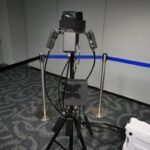
TYSONS CORNER, Va.--As the U.S. begins to deploy new and replacement physical structures along portions of the southwest border, Customs and Border Protection (CBP) will be looking to harness technology to give its agents situational awareness before illegal activity gets to the wall, according to the agency’s top acquisition official.As plans for a border wall system are being developed, the technology component will be brought closer to the wall to help keep it “strong,” Mark Borkowski, assistant commissioner for Office…

 By
By 









